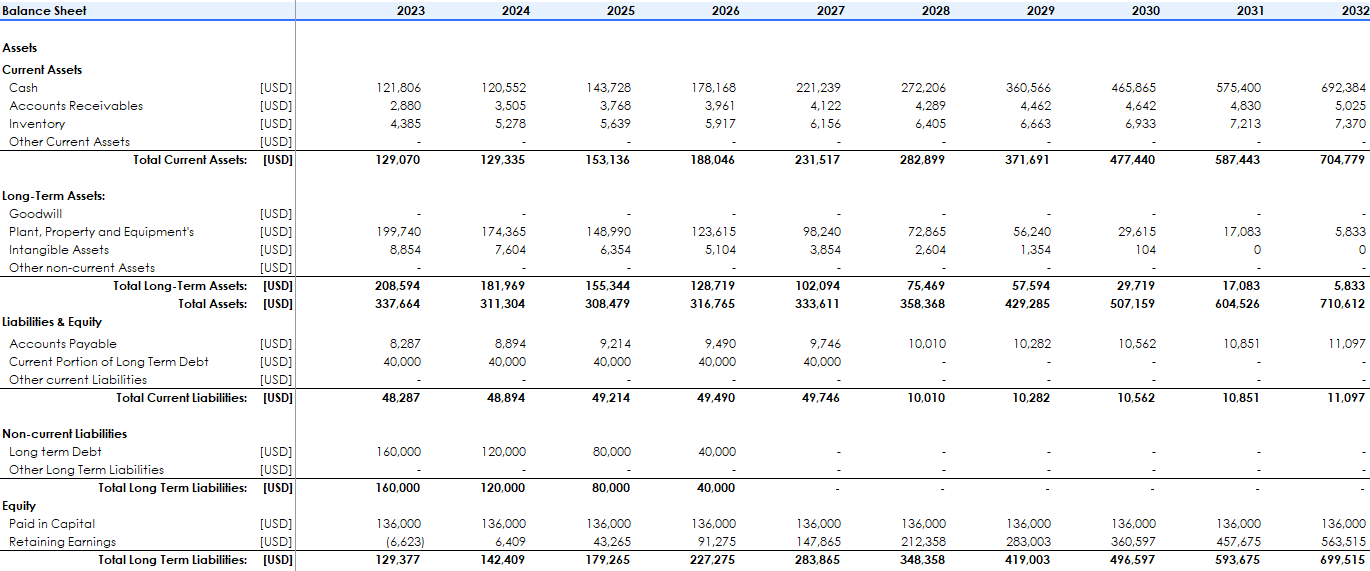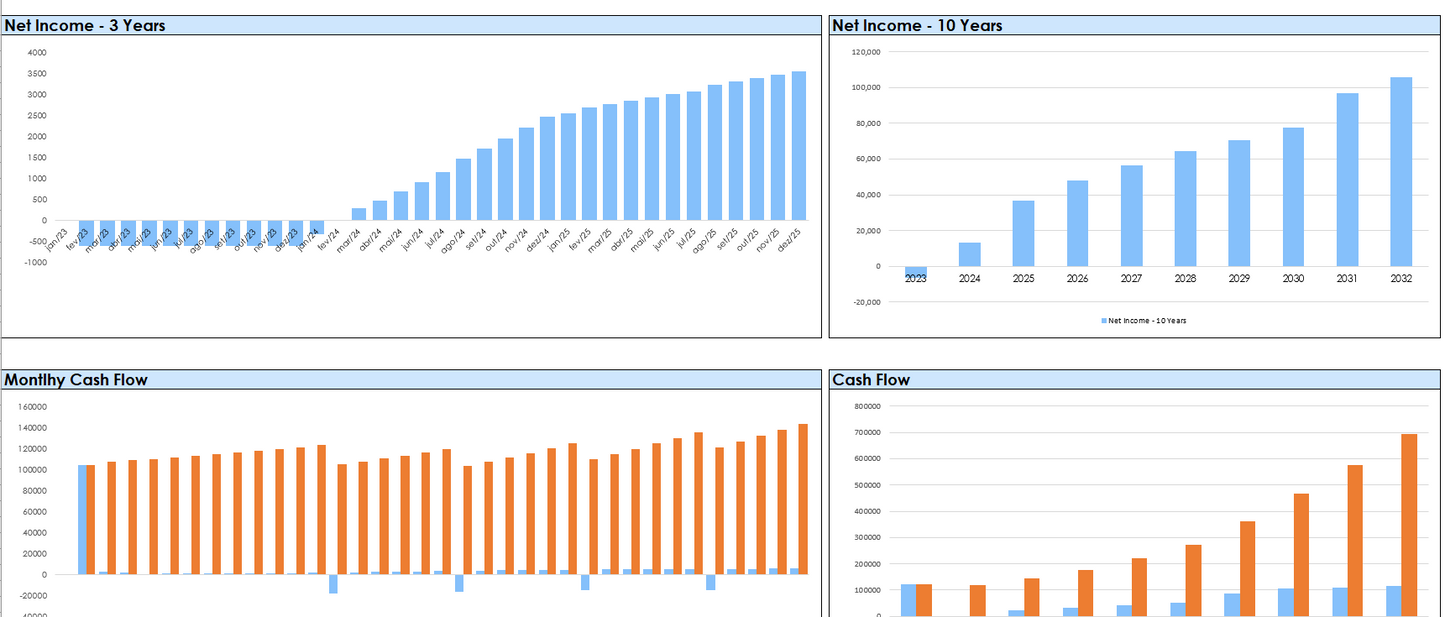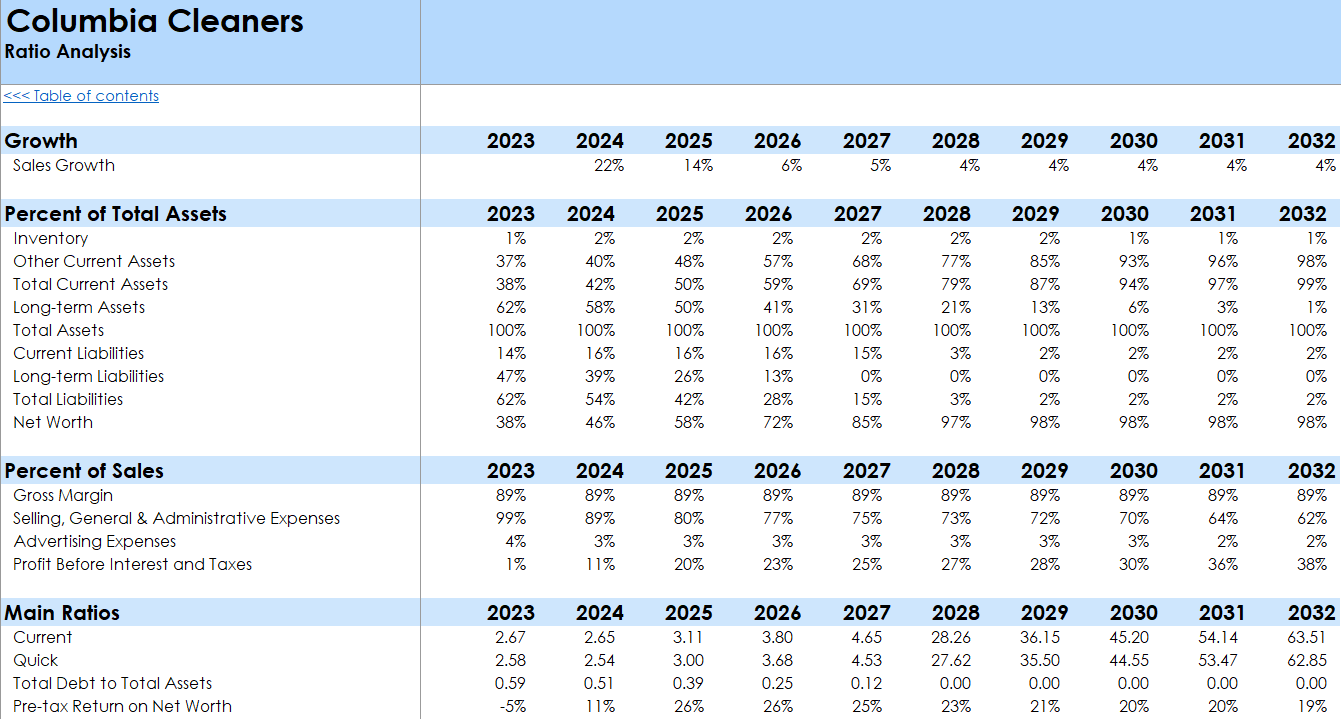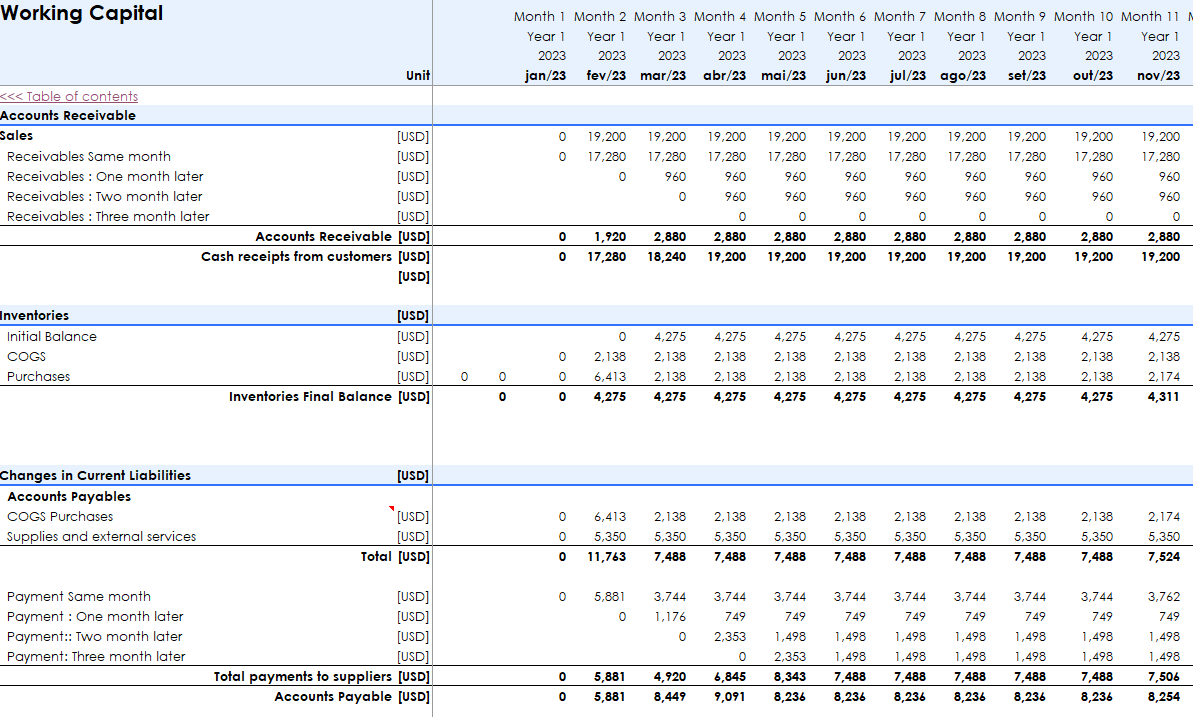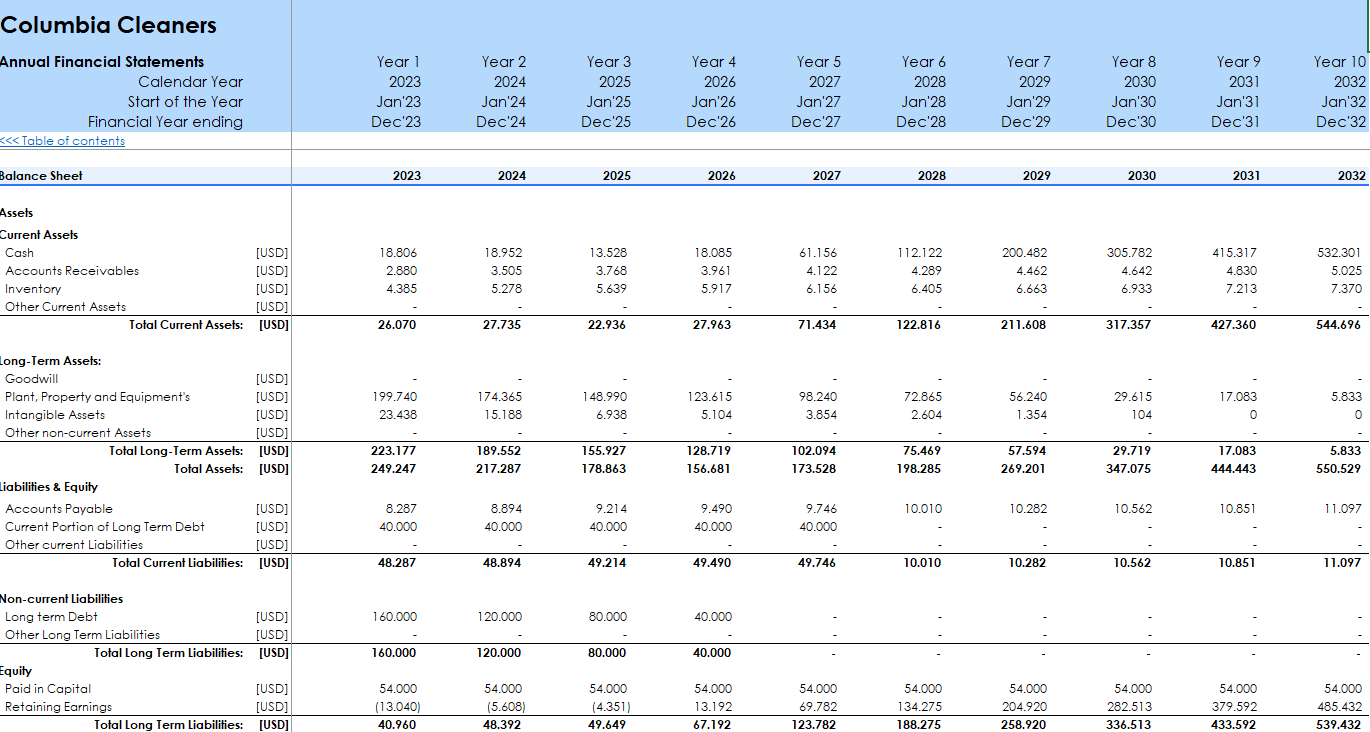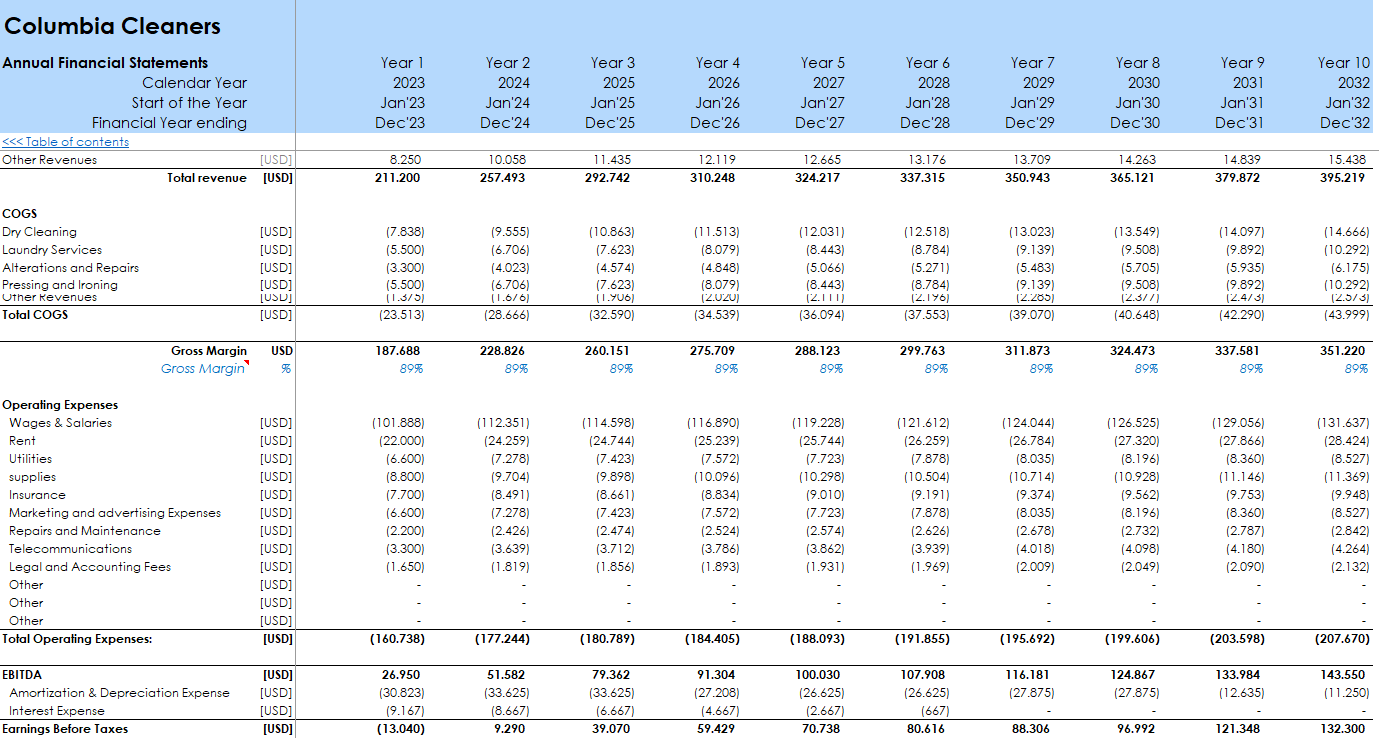Bizz View
Dry Cleaning Financial Model and Budget Control Template
Dry Cleaning Financial Model and Budget Control Template
Couldn't load pickup availability
Dry Cleaning Financial Model and Budget Control Template
The financial model for a dry cleaner is designed to help owners and investors in the industry make informed decisions about the business's economic performance. The model is a comprehensive tool considering various revenue and costs assumptions and startup and operating costs.
One key feature of the financial model is that almost all inputs are set in the assumption sheets. These inputs include revenue assumptions, capital expenditure, operating expenses, startup costs, and other critical financial data. As a result, users need only input data on the blue font cell, while the rest of the model uses formulas or labels.
This user-friendly interface makes it easy to navigate and utilize, even for individuals with little financial experience. Moreover, the model is flexible, allowing users to change the labels without risking the model's integrity. This feature ensures that the model can be adapted to reflect changes in the business environment or the unique needs of a particular dry cleaning operation.
Throughout the model, several sheets (green ones) perform auxiliary, such as financial projections, debt projections, working capital projections, etc. For these sheets, the user doesn't need to input any additional info
Furthermore, the financial model includes blue sheets, which are output sheets that provide a detailed view of how the business would perform given the assumptions. These output sheets offer users a comprehensive analysis of financial projections, including revenue growth, gross margin, and net profit margin.
Additionally, the model offers a vast selection of charts and ratios that provide a more in-depth understanding of what drives the business. The model also includes an evaluation tab where users can assess their business's valuation and potential exit strategies. This feature is handy for investors looking to sell their stake in the company or for entrepreneurs exploring alternative options to grow their businesses.
Finally, the model includes a sheet where users can compare their business's performance against the initial forecast. To utilize this feature, users must input actual data as it becomes available on the sheet. This feature allows users to measure their performance against the original projections and adjust their strategy accordingly.
In conclusion, the financial model for a dry cleaner is a powerful tool that enables business owners and investors to make informed decisions about the financial performance of their business. The model's user-friendly interface, detailed output sheets, and comprehensive charts and ratios provide a comprehensive view of the business's financial health. Furthermore, the model's evaluation and comparison features allow users to evaluate their business's potential and adapt their strategy to maximize their financial success.
Model Structure
- Assumptions: This sheet contains all the assumptions that are used in the financial model, such as revenue assumptions, capex, opex, and startup costs.
- Ops - Calculations of revenue, cogs, and opex: This sheet contains the calculations for revenue, cost of goods sold (COGS), and operating expenses (Opex). The calculations are based on the assumptions provided in the Assumptions sheet.
- Working Capital: This sheet calculates the business's working capital requirements, which is the money needed to run the business's day-to-day operations.
- Debt Model: This sheet models the debt considering the funding assumptions.
- Capex: This sheet models the capital expenditures required to start and grow the business, including the cost of equipment and property.
- Mo-FS - Monthly Financial Statement: This sheet contains the monthly financial statements for the business, including the income statement, balance sheet, and cash flow statement. These statements are based on the calculations performed in the Ops and Capex sheets.
- Actual: This sheet is used to input actual data as it becomes available. This allows the business owner to compare actual performance against the forecasted performance and adjust their strategy as needed (the expenses must be inputted as negative values).
- Annual Financial Statements: This sheet contains the annual financial statements for the business, including the income statement, balance sheet, and cash flow statement. These statements are based on the monthly financial information in the Mo-FS sheet.
- Summary - Executive Summary with Main Metrics: This sheet provides a summary of the primary metrics for the business, such as revenue, net income, and key ratios, allowing the business owner to assess the performance of the business quickly.
- Breakeven Analysis: This sheet calculates the breakeven point for the business, which is the level of sales at which the company is neither making a profit nor a loss, allowing the business owner to understand the minimum sales needed to cover their costs.
- Ratios - 20+ Ratios of All Kinds: This sheet provides a list of over 20 different financial ratios that can be used to assess the performance of the business. These ratios cover liquidity, profitability, debt, and activity.
- Valuation Calculation: This sheet calculates the business's valuation using discounted cash flow; this allows the business owner to understand the potential value of their business and make informed decisions about its future.
- Budget vs. Actual: This sheet provides a comparison between the budgeted amounts and the actual amounts for the various financial metrics, such as revenue, expenses, and net income. The sheet also compares the actual amounts and the corresponding period from the previous year; this allows the business owner to understand how well the business is performing relative to their budget and historical performance.
- Charts: The sheet also includes charts to help visualize the differences between the budgeted and actual amounts. These charts can help the business owner identify areas where the business is performing better or worse than expected and take action to address any issues.



